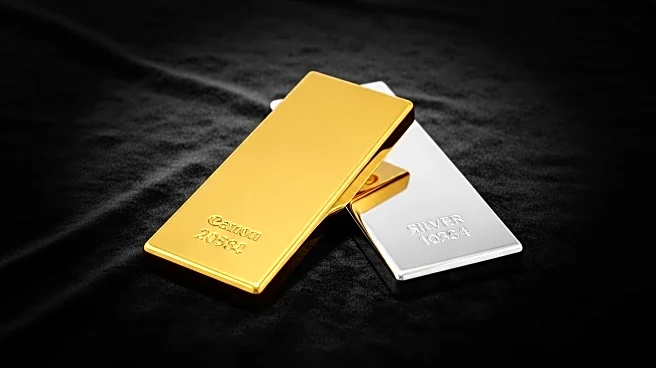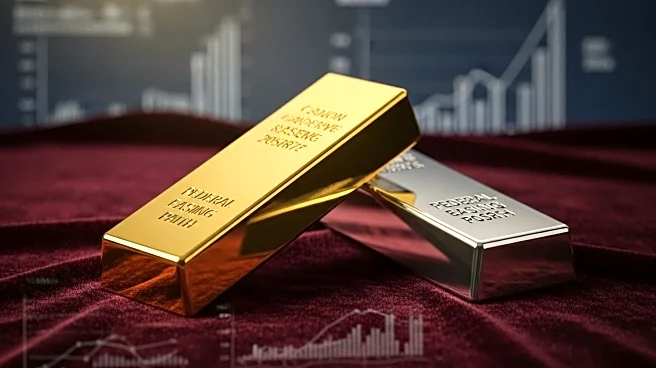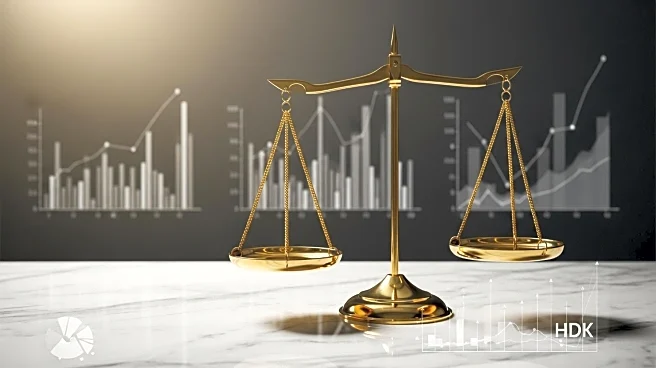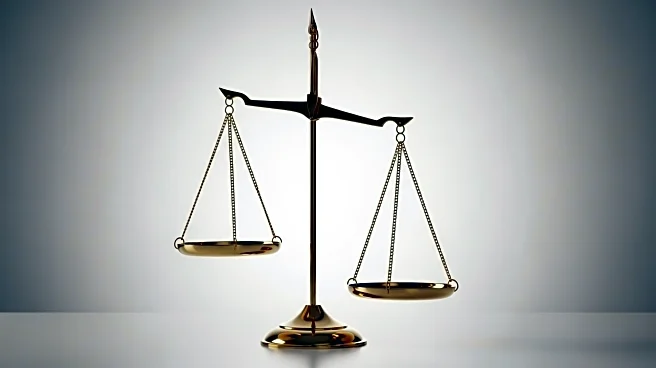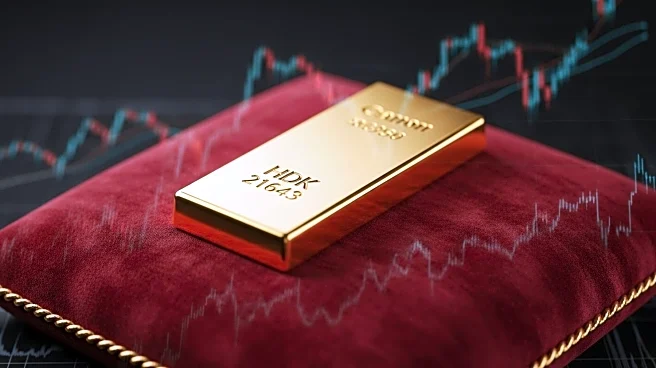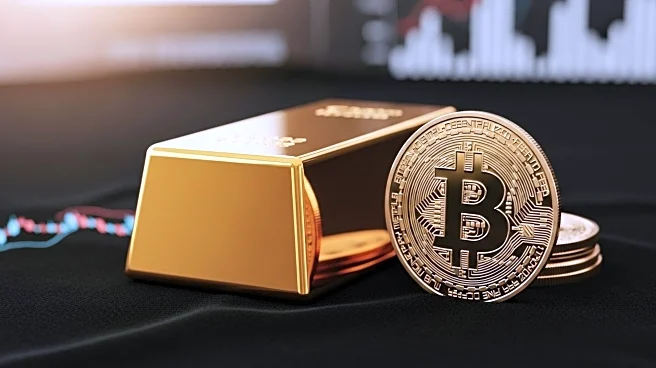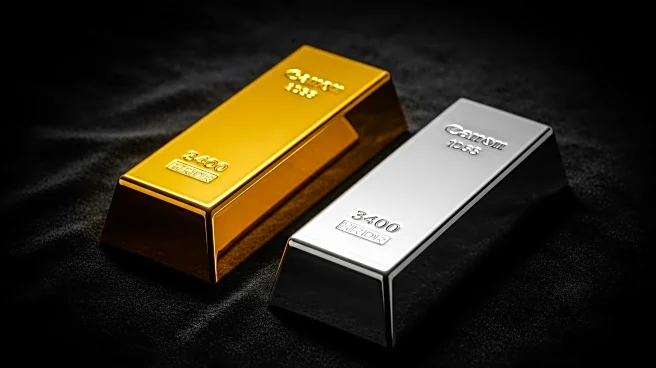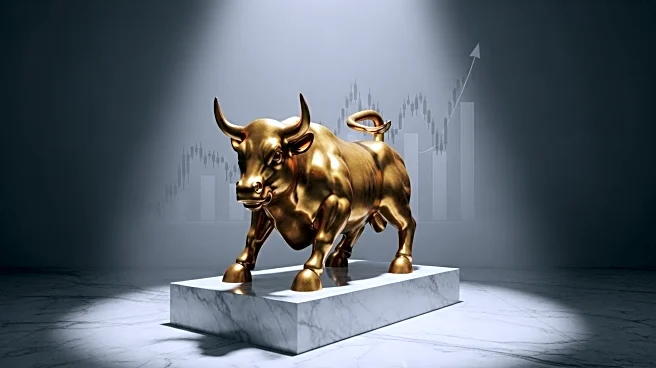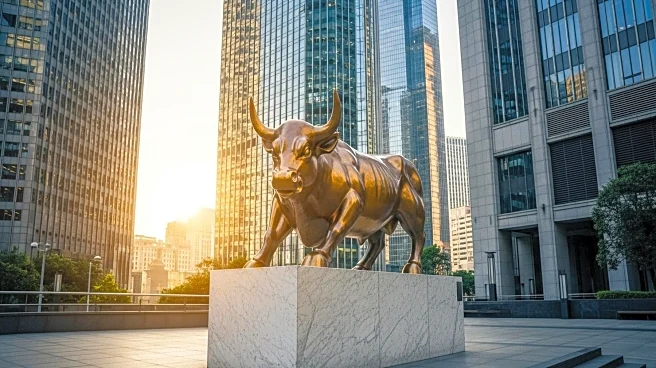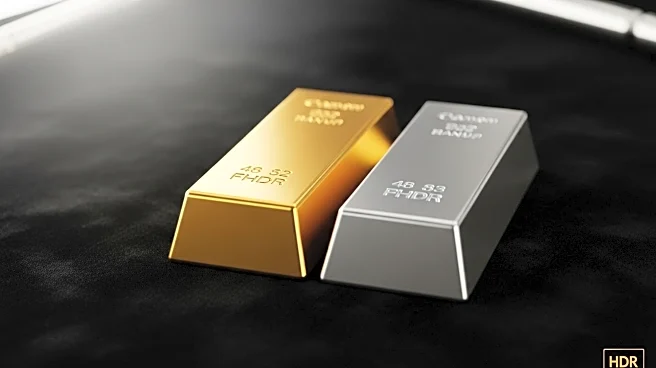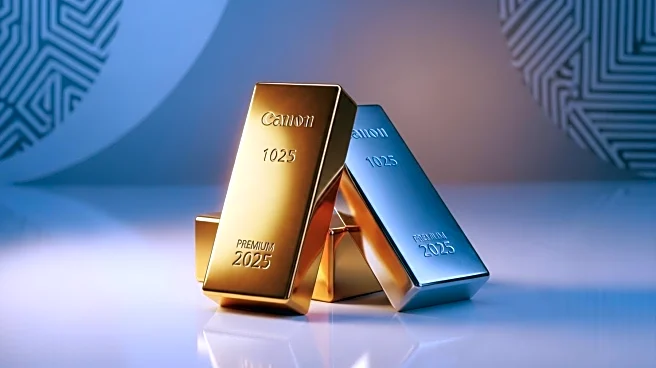What's Happening?
The U.S. Federal Reserve's anticipated rate cuts have led to increased demand for precious metals, particularly gold and silver. The August 2025 nonfarm payrolls report showed only 22,000 jobs added, far below expectations, prompting speculation of aggressive monetary easing to prevent a recession. The unemployment rate rose to 4.3%, the highest since October 2021, further supporting the likelihood of rate cuts. As a result, gold has surged to record highs, nearing $3,600 per ounce, driven by a weakening U.S. dollar and reduced opportunity costs for holding non-yielding assets. Silver has also seen significant gains, rising 37% year-to-date due to industrial demand and supply constraints.
Why It's Important?
The Fed's easing path and the dollar's depreciation have created favorable conditions for precious metals, offering investors a hedge against macroeconomic risks. Gold's appeal as a safe-haven asset is reinforced by geopolitical tensions and legal challenges to U.S. tariffs. Silver's performance reflects its dual role as an industrial and monetary asset, with demand from the renewable energy sector providing additional support. Investors are encouraged to consider both metals as strategic components of a diversified portfolio, balancing gold's macroeconomic stability with silver's industrial growth potential.
Beyond the Headlines
The dynamics of gold and silver markets highlight the importance of understanding their distinct drivers. Gold's inverse relationship with the dollar and its role as a store of value make it a reliable hedge during periods of economic uncertainty. Silver's sensitivity to trade tensions and supply-side shocks requires a nuanced investment approach, considering its exposure to both industrial demand and monetary policy.
